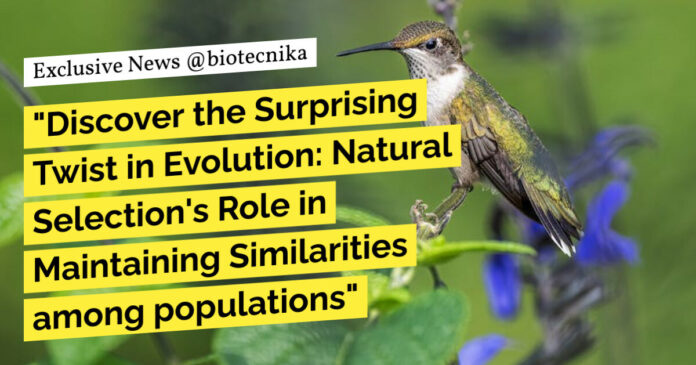
Natural Selection: A Surprising Mechanism in Evolution
Introduction
When we think of natural selection, we often think of change and adaptation. However, new research suggests that natural selection can also contribute to preserving similarities between populations. While evolutionary biologists have a solid understanding of the process of evolution and the genetic diversity it creates, there is more to evolution than just differences. In this article, we delve into a recent study by evolutionary biologist Jeff Conner and his team, which sheds light on how natural selection can actually slow down the process of evolution by maintaining similarities among populations.
The Role of Natural Selection in Evolution
Natural selection is a fundamental driver of evolution. It acts upon the genetic diversity within populations and selects for traits that improve an individual’s chances of survival and reproduction in a particular environment. Traits that provide an advantage are more likely to be passed on to future generations, while less advantageous traits are gradually eliminated. This continuous process leads to the diversification of species and the emergence of new traits over time.
Maintaining Similarities through Natural Selection
While natural selection is widely recognized for creating diversity in life forms, it can also lead to
similarities among populations. Jeff Conner and his colleagues conducted a study on wild radish (Raphanus raphanistrum) to investigate this phenomenon. They focused on the anther separation, which refers to the difference in length between pollen-producing structures in the flower.
Previous research had suggested that natural selection was responsible for maintaining the anther separation, although the reason behind this was unclear. In order to understand this further, the researchers used artificial selection to breed wild radishes and manipulate their appearance to resemble their more primitive state, with a smaller gap between stamens.
Understanding Constraint in Evolution
The study introduced the concept of constraint in evolution. Constraint refers to the limitation in genetic variation necessary for traits to evolve. Without sufficient genetic diversity, the potential for evolutionary change becomes impeded, even if it would be favorable for a trait to evolve. As species change over time, certain traits stabilize across generations due to a lack of genetic flexibility. While natural selection can be viewed as the driver of change, constraint acts as a brake, slowing down the process of evolution.
Experimental Findings
Through their experiments, Conner and his team showed that artificial selection can indeed restore the anther separation in wild radish, reducing the difference in stamen lengths by over 30%. This demonstrates that the genetic variation required for this trait to evolve is still present in today’s wild radish populations, suggesting that they are not constrained in their evolution. Instead, natural selection seems to play a role in maintaining the difference in stamen lengths.
Implications and Future Research
The researchers are now further investigating the potential benefits of the varying stamen lengths in wild radishes. They are studying the interaction between the plant and its pollinators to determine whether the differences in stamen lengths confer any advantages. This research will shed light on the specific selection pressures that have influenced the evolution of this trait over millions of years.
Conclusion
In conclusion, while natural selection is commonly associated with driving diversity and change, it can also slow down the process of evolution by maintaining similarities among populations. The study on wild radish by Jeff Conner and his team highlights how natural selection operates as both an engine of change and a mechanism that preserves certain traits. This research expands our understanding of evolution and challenges the conventional notion that natural selection is solely responsible for driving differences in species.
Keywords: natural selection, evolution, genetic diversity, trait evolution, constraint, wild radish, stamen lengths, artificial selection, diversity and similarities, selection pressure, preservation of traits. Please ensure you are subscribed to the Biotecnika Times Newsletter and our YouTube channel to be notified of the latest industry news. Follow us on social media like Twitter, Telegram, Facebook and Instagram. Natural Selection: A Surprising Mechanism in Evolution.
- SEO Powered Content & PR Distribution. Get Amplified Today.
- PlatoData.Network Vertical Generative Ai. Empower Yourself. Access Here.
- PlatoAiStream. Web3 Intelligence. Knowledge Amplified. Access Here.
- PlatoESG. Carbon, CleanTech, Energy, Environment, Solar, Waste Management. Access Here.
- PlatoHealth. Biotech and Clinical Trials Intelligence. Access Here.
- Source: https://www.biotecnika.org/2024/01/natural-selection-surprising-mechanism-evolution/

